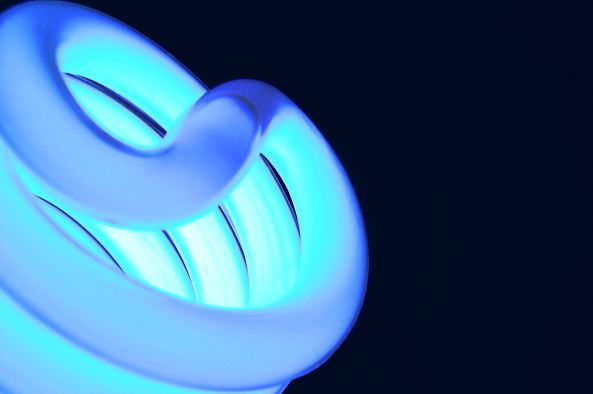Which Is better? Standard Energy Savers Or LEDs.
Posted by Amit Soni on 16th Jul 2012
 The impending EU ban on incandescent bulbs means that you’ll no longer be able to buy traditional halogen light bulbs. This means that the only lights that will be left on the market are energy efficient variants.
The impending EU ban on incandescent bulbs means that you’ll no longer be able to buy traditional halogen light bulbs. This means that the only lights that will be left on the market are energy efficient variants.
Right now there are 2 choices – compact fluorescent lighting (CFLs), more commonly known as energy saving bulbs, and light-emitting diodes (LEDs). Whilst CFLs have been on the market longer, you may want to weigh up the pros and cons.
LEDs come with many advantages, and we’re going to look in more detail at some of these.
LEDs Are More Efficient Than CFLs
Both LEDs and CFLs use considerably less energy than incandescent bulbs. Whereas a typical CFL uses between 9 and 11 watts, an equivalent LED uses between 4 and 6 watts.
The reason why LEDs use so much less energy is because they are so much more efficient. Other kinds of lighting lose a lot of their energy to heat wastage, with incandescent bulbs losing up to 80%.
LEDs on the other hand only lose about 10% of their energy to heat, making them far more cost effective and environmentally friendly than any other type of lighting on the market.
LEDs Last Longer Than CFLs
A by-product of the efficiency of LEDs is a really long lifespan. This is because there is less wear and tear on the internals from constantly heating and cooling. This is compounded by the lack of fragile parts too, leading to a much higher reliability.
The result is that most LEDs come with an expected lifespan of 30,000 to 50,000 hours. So even if you’re using them for an average of 8 hours per day, you’ll still be getting up to 17 years of use out of them.
This is 2 times longer than even the best fluorescent lights, and 20 times longer than the soon to be banned halogen bulbs.
LEDs Are Safer Than CFLs
Like all fluorescent lighting, CFLs contain mercury in its vapour form, which is hugely detrimental to you, your loved ones and wider natural ecosystems. It has adverse effects on your immune system, brain and internal organs.
Disposal is an issue too, with most people’s contact with mercury coming from contaminated fish.
CFLs require you to take them to a special recycling facility when they’ve stopped working. LEDs on the other hand contain no harmful substances, making them much safer and far easier to recycle.

LED Bulbs Come On Straight Away; CFLs Do Not
Switching on a CFL doesn’t give you maximum light straight away – they are dim at first and take up to a few minutes to reach full brightness. This is because there has to be an adequate amount of mercury heated into vapour form so it can reach maximum power.
This isn’t the case though with LEDs – which come on instantly and hit full brightness immediately.
Colour Temperature
CFLs produce a much “colder” light than incandescent bulbs, which can make objects look dull and lifeless. Many people understandably find this unappealing.
LEDs however can reproduce different strengths of colour temperature, with warm white (3000K), cool white (6000K) and day light (4000K) making up the options,
The fact that LEDs in warm white replicates the warmth of a traditional incandescent makes them a popular choice for long term halogen replacements, as the end product is so similar.
Brightness
Some CFLs can lose up to 25% of their brightness around halfway through their lifespan. In contrast to this, an LED light will shine at 100% brightness for the entirety of its life.
LEDs Are Maturing; CFLs Are Not
CFLs have changed very little since they first appeared on the market back in the 90’s. This lack of development is very telling, and confirms that CFLs are set to become a transitional technology – bridging the gap between incandescent bulbs and LED lights.
LEDs have already improved drastically since their first arrival on the market, and will continue to do so for years to come.
Cost

Unfortunately, LED bulbs do cost more than CFLs, but the advancements in the technology has already brought the cost down.
The other main point that is worth considering is that LEDs give you a long term savings thanks to lower energy consumptions and longer lifespans. The return on investment (ROI) on LEDs is typically within the first year of use, so you don’t even have to wait long!
CFLs have been great for saving money in the past, but now, LEDs are at a point where they are highly feasible to use both domestically and commercially, and are ready to become the industry standard for lighting.





